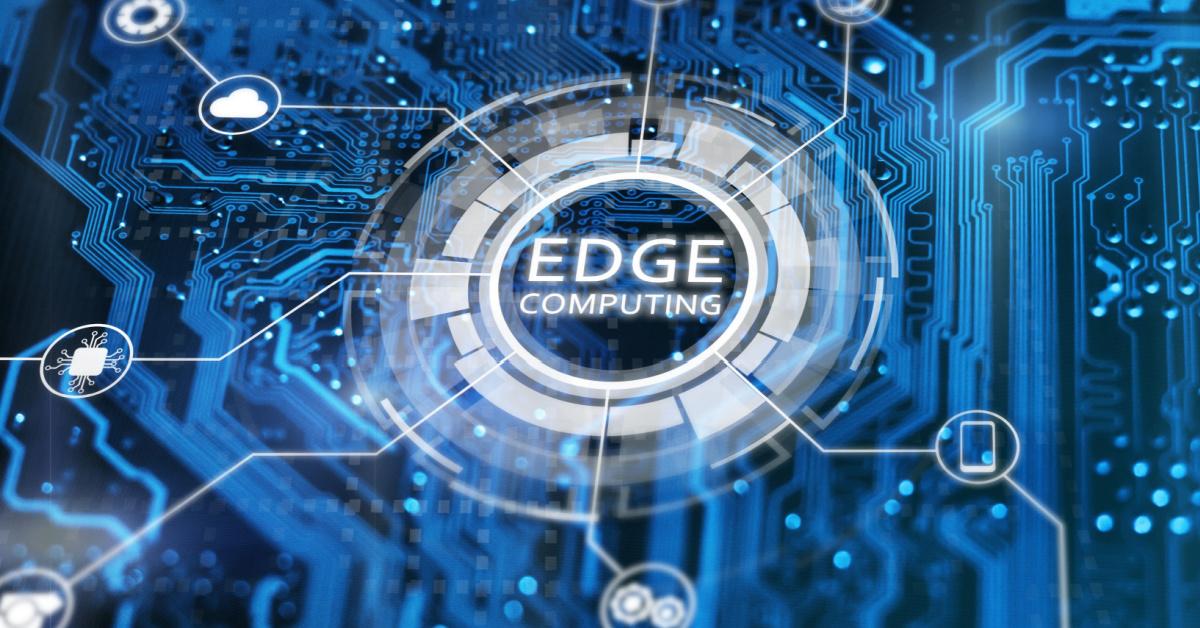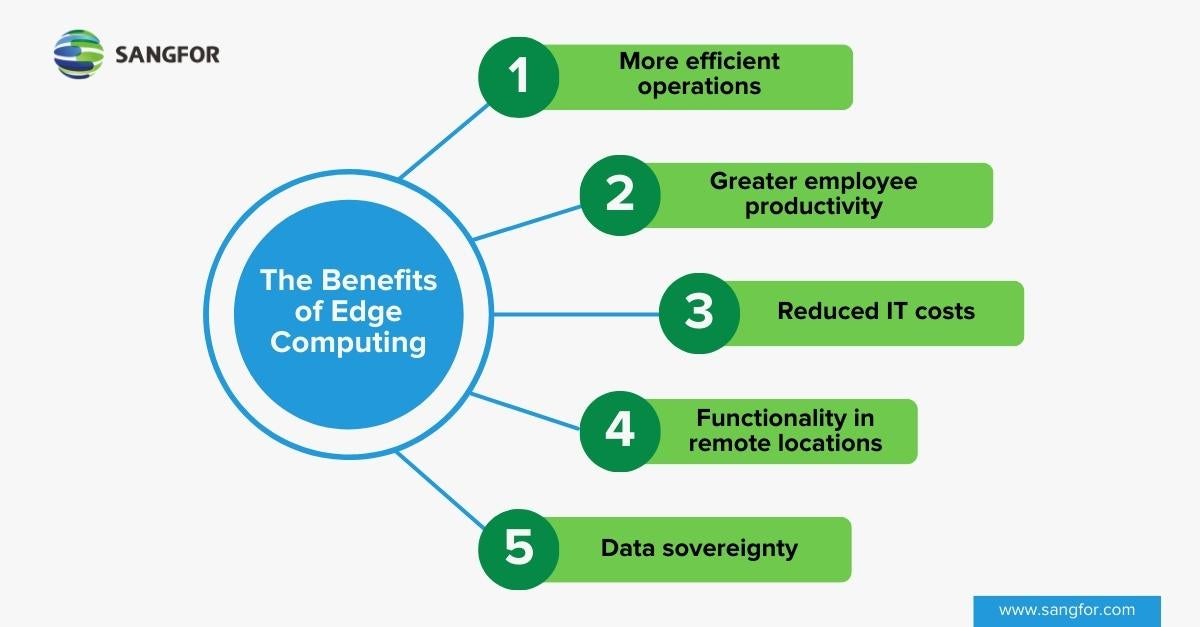Abstract
We are in the midst of a digital transformation era, and more than ever before, enterprises of all sizes are investing heavily in data-driven artificial intelligence/machine learning (AI/ML) processes. These help organizations promote efficient business operations, create new revenue opportunities, and gain competitive advantages. Initially, organizations turned to the public cloud to make sense of their data as it provides high availability and rapid scaling of compute resources for big data AI/ML applications while reducing infrastructure complexity. However, with the explosion of data at the edge, a new problem emerged—getting the data to the cloud. This is where Edge Computing comes into the picture.
What is Edge Computing?
Edge computing is a distributed computing paradigm that brings enterprise applications closer to data sources, such as the Internet of Things (IoT) and local Edge servers. This proximity improves response times and saves massive bandwidth, thus avoiding performance bottlenecks that affect real-time analysis for critical decision-making. Without Edge computing, the huge volume of data generated by edge devices would overwhelm most of today's business networks, hampering all operations and affecting network efficiencies. IT costs would skyrocket, dissatisfied customers would take their business elsewhere, and valuable machinery would be damaged or less productive.
The rapid rise of Edge computing is driven by the ongoing digitalization across all layers of government, enterprises, and societies around the world. One major driver behind this momentum is the surge in IoT devices, which generate vast amounts of data that needs to be processed as close to where it’s created as possible. This reduces latency and improves performance for critical decision-making made in real time.

Edge Computing Use Cases
Edge computing is revolutionizing a wide range of industries with its decentralized approach to data processing. The following are several of the main use cases of Edge computing.
- IoT Devices: Edge computing enables real-time data processing and analysis for IoT devices, reducing latency and bandwidth usage.
- Autonomous Vehicles: Edge computing enhances the responsiveness of autonomous vehicles by making critical decisions in real time.
- Video Surveillance: Video feeds are processed locally to provide faster detection and response to security threats.
- Industrial Automation: Real-time computing is essential for controlling machines, robots, and processes, ensuring precision and avoiding accidents.
- Telemedicine: Remote medical devices can process and transmit data in real time, enabling remote patient monitoring, consultation, and surgery.
- Smart Cities: Edge computing assists in managing various urban services like traffic control, waste management, and public safety.
Why is Edge Computing Important?
Until recently, pre-processing data at the Edge in large volumes was difficult, but the emergence of AI/ML has made powerful data analytics at the Edge a reality. Now, a more cost-effective and efficient approach is to process as much IoT data as possible on-site and then move a subset of that data to the cloud for deeper analytics. This greatly improves the response times of remote devices and extracts richer, more timely insights from device data. It has brought real-time processing power to locations where it would not have been feasible, reducing bottlenecks on networks and in data centers. This is critical for Edge use cases that demand instant data analysis and low-latency network connections, like industrial automation, self-driving cars, and remote surgery.
The global Edge computing market is also set to grow exponentially due to the implementation of 5G/6G infrastructure, which will increase the 5Vs of data – velocity, volume, value, variety, and veracity. This reduces complexity, saves costs, and strengthens cybersecurity defenses. Early market momentum for Edge infrastructures came from cloud service providers (CSPs) as they virtualized their networks. However, in the longer term, it is expected that mobile and residential consumer use cases will contribute to 35-40% of global Edge computing and infrastructure demand.
The Benefits of Edge Computing
- More efficient operations: Edge computing works to optimize day-to-day operations by rapidly processing large volumes of data at or near the sites where the data is collected, bypassing centralized cloud or data center locations. This enables companies to extract valuable insights from the data in real-time or near-real-time to facilitate critical decision-making.
- Greater employee productivity: Edge computing delivers the data that workers need to complete their job duties efficiently. It reduces interruptions and easily preventable mistakes via automation and predictive maintenance.
- Reduced IT costs: Businesses can optimize their IT expenses by processing data locally rather than in the public cloud. Unnecessary data is filtered out at or near the location it's collected before being sent to the cloud, which minimizes cloud transmission, processing, and storage costs.
- Functionality in remote locations: Edge computing makes it easier to utilize data collected at remote sites where internet connectivity is intermittent or bandwidth is limited. Once internet connectivity becomes available, the relevant data can be transmitted to a central data center for processing and analysis.
- Data sovereignty: When organizations gather, process, store, and use customer data, they must adhere to the data sovereignty laws of the country or region where the data is collected and stored. Moving data to the cloud across national borders can make it difficult to adhere to these laws. With Edge computing, businesses can ensure that they’re complying with local data sovereignty guidelines by processing and storing data within its borders.

The Relationship Between Edge Computing & Cloud Computing
As a natural extension of Cloud computing, the Cloud located at the Edge is increasingly viewed as a key enabler of the “Fourth Industrial Revolution” or Industry 4.0, characterized by the widespread deployment of the Internet of Things (IoT). According to a recent survey, there are currently 16 billion IoT devices deployed globally. Major players like AWS, Azure, GCP, VMware, and IBM offer hybrid and multi-cloud solutions that extend the cloud experience to remote locations. These solutions promise a consistent application and operations experience by leveraging infrastructure built at the Edge.
CSPs have driven early Infrastructure Edge demand as they virtualize and cloudify their networks. Initially, they virtualized core and transport networks with standards like NFV (Network Functions Virtualization) and SDN (Software-Defined Networking). This is generally a precursor for end-to-end network transformation that incorporates access network virtualization, such as Cloud Radio Access Networks (C-RAN). In addition, CSPs are uniquely positioned with geographically distributed network infrastructure, which is well-suited for Infrastructure Edge implementations. Also, many CSPs are implementing Multi-Access Edge Computing (MEC) technology to bring a variety of network-centric capabilities, often in partnership with third parties. It is forecasted that by 2028, 10.9% of infrastructure Edge deployments will be supported by CSP use cases.
Conclusion
For many organizations, most of their data comes from a variety of Edge locations, including remote or branch offices (ROBO), factory floors, retail stores, restaurants, oil rigs, vehicles, and remote outposts. The data is produced by the ever-increasing number of sensors and IoT devices deployed at Edge locations. The challenge is that, for many use cases, there is an urgent need to have immediate actionable insights from this data. However, sending vast amounts of sensor data to a remote data center or public cloud for processing is not always efficient or feasible (due to the 5Vs and bottlenecks). This is where Edge computing is highly required. In the short to medium term, infrastructure Edge demand will be driven by cloud service use cases that are complemented and enhanced with edge computing capabilities. Edge computing has proven that it can provide immeasurable benefits for organizations that want to extend their cloud computing capabilities to Edge locations. Soon, we will see organizations embed it into their digitalization strategies and roadmaps on a global scale.


